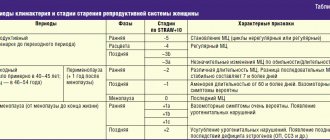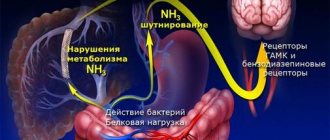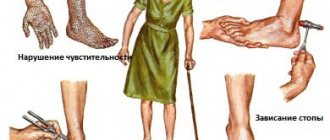Manual therapy is a branch of professional medicine in which the doctor uses his hands to provide therapeutic effects on the patient’s joints, muscles, spinal column and other parts of the body. It is used as a primary or additional means of treatment, diagnosis and prevention of diseases of the musculoskeletal system.
Brief information
A chiropractor is a specialized therapeutic specialist. Engaged in direct therapy of the spine, muscles, and joint apparatus. Affects painful structures exclusively through the hands. Similar methods of influence have been used for a long time, but they became a separate industry relatively recently. The name of the specialist has Greek roots. The literal translation is “hand therapy.”
The services of a chiropractor are unique in their kind. It is possible to eliminate symptoms that traditional, standard medicine had no effect on.
Features of therapy
Therapy often helps patients overcome advanced cases of the disease. Moreover, we are not only talking about damage to joints and muscles. Sometimes therapy heals the spine and a number of internal organs. The doctor's work can be described as a complex massage. These are special methods of diagnostic and therapeutic application of hands using more than three thousand basic techniques.
Content:
- Brief information
- Features of therapy
- Scope of competence
- Treatment approaches
- When you need help from a manual technician
- Where does the specialist meet?
- What does the doctor treat?
- Reception features
- Qualities a doctor should have
- General recommendations
Manual therapy includes hard and soft techniques. Soft principles are separated into a separate category – osteopathy. Hence the name of a specialist in this field - osteopath. In fact, this is one specialty, differing only in the method of influence.
Massage therapists are distinguished separately. But these categories are completely incomparable. And not only in terms of medical qualifications, but also in terms of the power of influence on a person.
The fact is that the massage therapist works exclusively with soft tissues, which he kneads and rubs. The massage therapist has no right to influence the spine, joints, or discs. This is done only by a “manual operator” - a person with the appropriate education and skills.
First of all, a manual doctor - necessarily a certified neurologist or orthopedist. Only then is it a master of hands.
Do not confuse a chiropractor with a chiropractor. A chiropractor deals with dislocations and broken bone structures. The task of such a specialist is to correctly put them in place and fix them.
What to do if you have back problems?
If symptoms of osteochondrosis appear, then at the first stage it is necessary to be examined by a qualified specialist. This is necessary to determine neurological and orthopedic disorders, order the necessary studies for correct diagnosis and determine treatment tactics. An incorrect diagnosis can sometimes lead to very serious complications!
Most patients understand perfectly well that they will be treated not by the name of the technique or the name of the medical institution, but by an ordinary practicing doctor. The real result of treatment depends on his professional qualities. Hand healing usually requires experience and care. In some cases there are contraindications that need to be recognized and properly assessed.
In connection with the above, it is important to clearly understand that only a certified doctor who has undergone special training and has the appropriate certificate has the right to carry out such treatment.
Scope of competence
The doctor diagnoses diseases of the musculoskeletal system and nervous structures. The required volume of therapy is determined individually. This allows you to defeat the most severe lesions and prevent their relapses.
Procedures may be prescribed during the recovery period after surgery. This can significantly alleviate the condition and eliminate pain.
Treatment approaches
Before starting such treatment, it is imperative to diagnose the affected structures. Only after examination, clarification of complaints, X-rays, or MRI, sometimes ultrasound, can one see the presence of indications, the features of the course and the complexity of the process. This is why a true specialist will never work in isolation from a medical facility.
It is impossible to heal in one session. On the contrary, in most cases, after the first procedures, patients often feel a significant deterioration in their health, an exacerbation of the process. This is a normal reaction that goes away within a couple of days.
The main task of any doctor is to do no harm. Therefore, the specialist categorically avoids excessive, aggressive and dangerous influences. It has been proven that the maximum positive effect comes from a soft, osteopathic effect. The doctor works especially carefully with children and the elderly. Whatever the method, the patient is always fully monitored, and any changes in well-being are taken into account.
Methods
In manual therapy, there are 3 methods of influence: manipulative, craniosacral and visceral. The first is used most often and is based on working with the spine.
Craniosacral manual therapy involves influencing the bones of the skull and actively working on the vertebrae of the cervical spine. Thanks to her, she manages to:
- normalize intracranial pressure;
- improve blood supply to the brain;
- get rid of migraines;
- improve the quality of cognitive functions, i.e. attention, memory, etc.
Visceral therapy consists of a gentle effect on the internal organs of the abdominal cavity and the muscular corset. Targeted, precise actions of a specialist in the abdominal area lead to increased blood circulation and improved metabolic processes.
This ensures increased trophism of tissues and organs, which has a beneficial effect on the functioning of the heart, bronchi, lungs, gastrointestinal tract, kidneys and pelvic organs. As a result, the internal organs return to their normal position and gain natural mobility. The method is widely used not only for the correction of pathological conditions, but also to eliminate the consequences of past diseases, as well as to prevent the development of complications after injuries, surgical interventions, childbirth, etc.
All methods used in manipulative manual therapy can be divided into direct and indirect, passive and active, hard and soft. Each of them involves the use of special techniques, among which the most common are:
- manipulation;
- mobilization;
- post-isometric relaxation.
Particularly pronounced results with a gentle effect on the body are achieved by using the method of Russian academician Anatoly Grigorievich Gritsenko. He managed to form his own system of manual manipulation, which, in combination with the use of other well-known techniques, raised thousands of people to their feet and relieved pain of varying intensity.
Manipulation or push mobilization
Push mobilization is a widely used technique that involves a single, not too strong, but sharp push in the direction of the most pronounced restriction of movement. This technique is carried out at the moment of exhalation and the greatest relaxation of the body, which is usually observed when the patient does not expect any active actions. Thanks to push mobilization, the boundaries of joint mobility change, which leads to a significant increase in motor capabilities.
The correctness of the technique is eloquently indicated by a characteristic click. In this case, the functional block that limits mobility in this spinal motion segment is eliminated. After realignment of the vertebrae, the muscles relax, tension and pain caused by pathological changes are eliminated.
Although at first glance it may seem that the click or crunch is heard due to the bone element jumping into the desired place, in reality this is not entirely true. Its nature is still not known exactly, but the main version of its appearance is called the vacuum phenomenon, which implies the separation of previously tightly connected surfaces.
Mobilization
This is a technique of active influence on the spine, allowing:
- eliminate joint subluxations;
- return displaced vertebrae to normal position;
- reduce osteochondral protrusions called exostoses;
- eliminate increased muscle tone, spasms;
- significantly increase motor capabilities;
- activate the body's natural recovery processes.
It includes several types of techniques. Therefore, mobilization is distinguished:
- rhythmic;
- positional.
Rhythmic mobilization
This manual therapy technique is quite painful, but very effective. It is easy to implement for a specialist and facilitates the rapid elimination of functional blocks.
The essence of rhythmic mobilization is to perform traction of the spine followed by rotation (turning) of its rhythmic oscillatory movements. That is, initially the chiropractor stretches the joints without excessive effort, which helps to increase the distance between individual vertebrae.
Then he shifts the desired vertebrae to the sides relative to each other and smoothly swings them in the direction of restricting mobility. The technique is performed rhythmically with an intensity of 1–2 movements every second.
If the use of rotational movements is impossible, for example, in the sacral area, rhythmic pressure is applied to the desired areas. This compression effect is also used in the first sessions of manual therapy, when the muscles still maintain high tone.
Positional mobilization
This method of manual therapy can be called universal. It combines elements of rhythmic mobilization, PIR and manipulation. It involves a gentle impact at a slow pace.
Initially, the chiropractor finds the position in which the greatest tension is observed in the joints, and holds the patient in it with slight force for 1-2 minutes. Additionally, the flexor muscles are stretched and the extensor muscles are contracted, which leads to the correct distribution of the load on them while maintaining an upright body position.
Postisometric relaxation
The post-isometric relaxation method or PIR is one of the soft impact techniques. It promotes:
- pain relief;
- achieving maximum relaxation and stretching of the muscles in the spine;
- increasing the elasticity of muscle fibers.
This allows you to prepare the body for active exposure or relax after it. All movements are performed carefully and gently while inhaling. In this case, the patient needs to strongly tense the muscles. After a few seconds, they will reflexively relax, at which time the chiropractor, holding the patient’s body with one hand, makes pressing movements in the desired direction with the other. Returning to the starting position is carried out while exhaling. This causes muscle stretching and complete relaxation.
The procedure is repeated 7–10 times. This is enough for the muscles to relax, become soft and allow the specialist to perform the necessary manipulations at a deeper level, including the spine.
PIR techniques can be used on any part of the spine, but differ in different techniques.
Method of A. G. Gritsenko
A. G. Gritsenko’s method has been practiced for more than 27 years, but it takes more than one year to fully master it. Therefore, unfortunately, there are still quite a few specialists who successfully practice it.
It is based on restoring the body's reserve capabilities through the spine. The human body has the ability to recover when a negative factor is eliminated, which is usually the displacement of the vertebrae relative to the normal axis of varying degrees of severity.
Against the background of various factors, among which the leading positions are occupied by a sedentary lifestyle, heavy lifting and genetic predisposition, nerve fibers are pinched by displaced vertebrae. This leads to disruption of the functions of the spinal cord, which innervates organs, endocrine glands, muscles, skin, etc. Therefore, when it or the nerve roots extending from it are pinched, the connection between the organ and the nervous system is disrupted. This leads to a decrease in their functionality, since the organ stops receiving commands, which becomes a fundamental impetus for the occurrence of pathological changes in it.
Gritsenko’s method is based specifically on normalizing the position of the vertebrae, eliminating spinal deformation, which allows the release of pinched nerves and eliminate pressure on the spinal cord. It leads to:
- normalization of the spinal cord;
- restoration of nerve conduction;
- elimination of pain syndrome.
A. G. Gritsenko’s method has 95 patents and is unique. It involves carrying out ultra-precise, targeted, one might say, jewelry-like effects on each vertebra of the spinal column, which leads to the restoration of their normal axial position and the elimination of pathological processes in the body.
Treatment using the method of A. G. Gritsenko can be combined with work of any kind and business trips. Each session lasts from 10 minutes to half an hour, which depends only on the patient’s condition. As a result, there is often no need for surgery and continued expensive drug therapy.
When you need help from a manual technician
Experts themselves claim that such procedures are always needed by everyone. Often, even an infant requires sessions to restore the correct position of the vertebrae in some part. A person develops problems with his or her motor system. Most of them are connected to the spine. That is why patients of any age, gender and social status turn to the doctor.
The main task of a specialist is to establish biomechanics and normalize activity:
- spine;
- muscle elements;
- bone structures;
- ligaments
After all, the functioning of the brain, heart and other organ structures depends on this. Such patients also have problems with endocrine, respiratory, and digestive structures. Innervation, lymph flow and blood supply are significantly impaired.
The doctor is able to determine the root cause, show the patient weak points, and point out lifestyle features that prevent exacerbation or progression of the disease.
Alas, the possibilities of the doctor, as well as the therapy itself, are not limitless. Sometimes a patient can be cured only by surgery. This technique for treating the spine is performed exclusively by a neurosurgeon.
Most Frequently Asked Questions and Answers
Can manual therapy be harmful for spinal osteochondrosis?
Manual therapy for spinal osteochondrosis can be harmful if the indications and contraindications for its use are not correctly assessed, and on the contrary, it can be very helpful if it is used correctly, taking into account all the features.
Will manual therapy of the cervical spine help if you have headaches and dizziness?
Often headaches occur with muscle spasms in the neck and shoulder girdle. Dizziness and a feeling of noise in the ears or head occur when there is insufficient blood supply to the vertebrobasilar system. The reason for this is osteochondrosis of the cervical spine with the presence of hernias and protrusions. In this case, manual therapy of the cervical spine can be an indispensable and most effective treatment method.
What is the point of manual therapy?
The goal of manual interventions is to eliminate functional disorders in the functioning of the musculoskeletal system. Today it is believed that the main reason contributing to the formation of osteochondrosis, protrusions and herniations of intervertebral discs is improper functioning of the spinal column. Manual therapy techniques allow you to eliminate problems in the functioning of the spine, thereby eliminating the causes of protrusions and hernias.
What is gentle manual therapy?
To the question: “what is soft manual therapy,” one can answer that these are almost all techniques of manual therapy, with the exception of manipulation techniques, during which an acoustic phenomenon occurs, perceived as the sound of a click or crunch.
What manual therapy techniques are best to use for treatment?
It is more correct to use those techniques that are shown and are most effective in each specific case. This is decided by the doctor.
Does manual therapy help with protrusion?
For protrusion, as well as for herniated intervertebral disc, manual therapy is the most effective method of treatment, as it is aimed at eliminating the causes leading to the appearance of this pathology.
Does manual therapy for osteochondrosis relieve pain or treat it?
For osteochondrosis of the spine, manual therapy is both a pain-relieving and therapeutic procedure at the same time, as it eliminates the causes that contribute to the development of osteochondrosis.
Is manual therapy for a spinal hernia contraindicated or not?
In case of a herniated spine (more correctly, a herniated intervertebral disc), as such, manual treatment is not contraindicated. It is contraindicated when the hernia causes certain neurological complications, as well as if there is a high risk of complications.
Why do manual therapy if the pain went away after the blockade?
The pain may go away, but functional impairments remain, and after some time they will provoke pain again. Elimination of functional disorders in the musculoskeletal system is a necessary condition for achieving sustainable improvement.
Where does the specialist meet?
Often, chiropractors work in diagnostic and treatment centers of both general and specialized focus. They are often accepted in private clinics and spine treatment centers. In any case, you can get an appointment with such a specialist only by prior appointment.
The only significant difference is the number of people and the pricing policy. Everyone chooses for themselves: an acceptable price within the hospital walls or a more expensive appointment by appointment, but in comfortable conditions. The entire complex of examination, testing and therapy remains unchanged. This is in no way dependent on the reception location.
You can also find a doctor using the Internet. Online consultation is indeed less reliable, but it is accessible and very convenient. This is an opportunity to ask questions, describe the clinical picture of the disease, receive specialized answers, and, if necessary, make an appointment.
Cost of the session, course
On average, 1 session of manual therapy costs 3,000 rubles. Before starting treatment, a preliminary consultation and diagnosis is required, the cost of which is slightly lower (about 1,500 rubles).
Prices for services may vary depending on the region and clinic.
Reception features
At the initial consultation, the doctor necessarily collects a brief medical history, manually diagnoses the patient, determining the degree of joint mobility, areas of maximum tension and pain. Pain activity is assessed. The specialist needs to decide on further therapy tactics and a program for subsequent sessions. In the presence of severe, complicated illnesses, a number of additional diagnostic tests are required. Often, patients can be sent for X-rays, MRIs, and, if indicated, ultrasound or EEG.
Qualities a doctor should have
Not all manual technicians are excellent specialists. The master must have not only deep knowledge and understanding of his business. What is important for him are sensitive, strong hands, a penchant for this work, a good memory, a desire and the opportunity to expand his knowledge throughout his life.
It is extremely important that the doctor feels responsible and confident in his abilities. After all, the smallest wrong move can cost a person quite a lot.
A real specialist can be a neurologist or an orthopedist. After all, it is important not only to deeply understand the anatomical and physiological foundations, but also to master diagnostic and therapeutic methods. Often a specialist has to look at and evaluate radiographs, ultrasound reports, and cardiograms.
Best materials of the month
- Coronaviruses: SARS-CoV-2 (COVID-19)
- Antibiotics for the prevention and treatment of COVID-19: how effective are they?
- The most common "office" diseases
- Does vodka kill coronavirus?
- How to stay alive on our roads?
In order to become a chiropractor, you must first graduate from a medical school. You will need to undergo specialization in neurology or traumatology with a course in orthopedics. In the future, you can master manual therapy.
WHAT PROBLEMS DOES A MANUAL THERAPIST DEAL WITH?
A manual therapist is a specialist who has received a higher medical education in traumatology or neurology, and additional qualifications in manual therapy. The doctor influences the source of pain through significant mechanical techniques.
Manual therapy comes to the rescue in the following cases:
- joint dislocations, subluxations;
- muscle strains;
- pain in the back, neck;
- joint diseases - arthritis, arthrosis;
- contractures of the limbs due to neurological disorders, after sports injuries;
- recovery period after fractures;
- displacement of intervertebral discs;
- headache;
- pain in the back, neck;
- restriction of movements in the back, neck, limbs, and shoulder girdle.
The specialist directs efforts to eliminate specific violations in a specific area.









